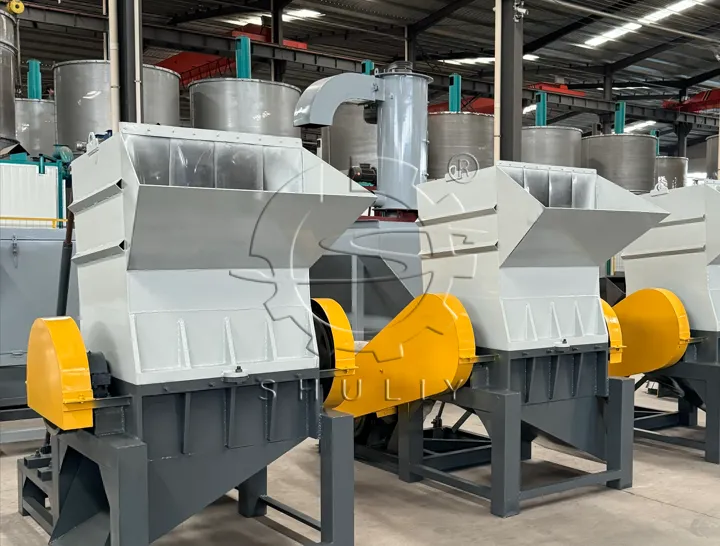The Critical Role of Plastic Size Reduction: Why You Must Crush Plastic Before Further Processing
Many plastic recycling operations struggle with inconsistent output, high contamination levels, and frequent equipment downtime. The root cause is often overlooked: skipping or improperly executing the most fundamental step in the entire process. This is the plastic size reduction stage. It is far more than just making big pieces smaller; it is the critical preparatory phase that dictates the efficiency and profitability of every subsequent step.
This guide will break down the precise reasons why you must crush plastic waste before any further processing, explaining how this single action directly impacts cleaning, drying, and the final quality of your recycled pellets.

Benefit 1: Maximizing Cleaning and Decontamination Efficiency
Imagine trying to wash a sealed plastic bottle versus washing the same bottle shredded into small flakes. The difference is immense. This illustrates the primary benefit of the plastic crushing process: drastically increasing the material’s surface area.
- How Does Crushing Improve Plastic Washing? Whole or large plastic items have limited surface area exposed to water and cleaning agents. Dirt, labels, and adhesives remain trapped. By crushing a bottle into uniform 20-50mm flakes, you expose hundreds of times more surface area. This allows friction washers and hot wash tanks to scrub every part of the plastic, effectively removing contaminants. This is the difference between producing low-grade material and high-quality, clean flakes ready for high-value applications. The processing of plastic flakes vs. whole bottles is fundamentally different in terms of cleaning effectiveness.
Benefit 2: Optimizing Material Handling, Drying, and Bulk Density
Dealing with whole, empty plastic bottles or long, tangled films is a logistical nightmare. They are low in density, difficult to transport, and take a long time to dry. An effective plastic size reduction process solves these material handling challenges.
- Increasing the Bulk Density of Plastic Scrap: A pile of uncrushed PET bottles is mostly air. By granulating them, you create a dense, free-flowing material. This increases the amount of material you can store in a silo or move per minute on a conveyor, dramatically improving the efficiency of your plant’s footprint and internal logistics.
- Faster, More Uniform Drying: Small, uniform flakes dry significantly faster and more evenly than large, bulky items where moisture can get trapped. This reduces the energy consumption of your drying systems and prevents issues like moisture-induced defects during the final extrusion stage.
Benefit 3: The Foundation for Stable and High-Quality Pelletizing
Perhaps the most critical role of size reduction is preparing feedstock for downstream equipment. A plastic pelletizing machine is a precision instrument that operates best with a consistent, uniform diet. This is where the importance of plastic granulation becomes undeniable.
- Improving the Efficiency of the Plastic Pelletizer: Feeding large, irregular scrap directly into a pelletizer is a direct path to failure. It causes problems with feeding large plastic scrap, leading to inconsistent melting, pressure fluctuations, and frequent machine jams. Uniform flakes, however, provide the steady, predictable feedstock the extruder needs to operate smoothly.
- How to Get Consistent Quality Plastic Pellets: The final quality of your pellets starts with the quality of your flakes. A uniform particle size in the plastic recycling feedstock ensures consistent melting, stable extruder output, and ultimately, a high-quality final product free from defects. This is the core principle behind every successful plastic film recycling line and hard plastic recycling line.
In essence, investing in a robust crushing process is a direct investment in the quality of your end product and the overall health of your production line. It minimizes operational headaches and maximizes the value of your recycled material, delivering significant cost savings from plastic size reduction.
The machine responsible for this critical first step is the industrial plastic crusher. Understanding its role is fundamental to designing a recycling operation that is not just functional, but highly profitable.
